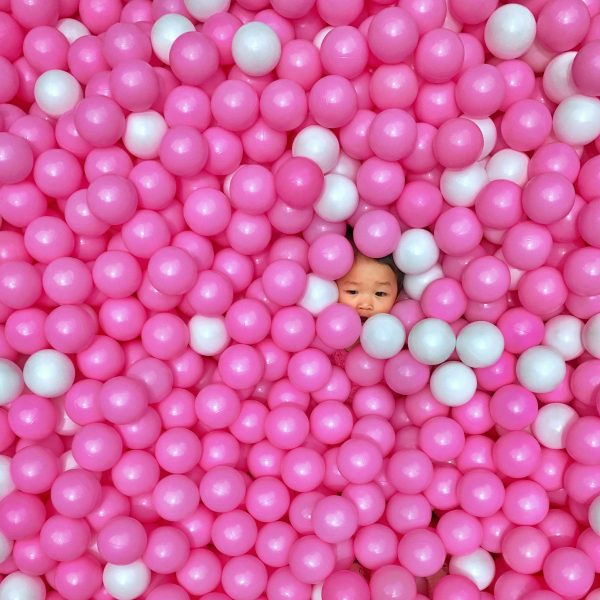All I want for Christmas is no othering – an alternative view of celebrations
opinion
The views expressed by contributors are their own and not the view of The Sector.

What does it mean, to be the “other?” If you and I are an “us”, it implies that everyone else is a “them”. When statements such as “we don’t have any of them here” or “they don’t think like us” are heard, bias – both conscious and unconscious – can creep in. Left unchecked, bias can be corrosive to children, families and teams…but what does that bias have to do with celebrations like Christmas?
Almost without fail, at the same time as Christmas decorations pop up in supermarkets and department stores around the country, so does commentary on the ‘war on Christmas’. In social media, on television, and at various other places around the country, people begin to talk about Christmas being shunned, and of traditional values being pushed to the side.
Comments such as “well we have to celebrate and talk about THEIR things, but we can’t talk about Christmas – how is that inclusive?” start to be heard.
Typically, comments in this space will feature two distinct camps. Camp one is asking questions such as “Who is them? Are religion and culture the same thing?” Camp two is often expressing dismay about no longer recognising the social landscape around them, with comments such as “We’ve gone too far the other way! We bend over backwards to celebrate other cultures, but can’t celebrate our own!”
Us, them, our, other… all terms which imply there are distinct ways of being, knowing, living and understanding, and that one has superiority to the other. A direct contrast to the hundred languages concept, the term ‘othering’ describes a world of black and white. Us and them, right and wrong, normal and different.
In a rapidly changing world, which is often reflected in the diversity of religion, culture, gender and family construction found in early childhood education and care (ECEC) services all around Australia, people can become anxious as the world around them changes and shifts.
As people respond to the shift, their view of what is acceptable and ‘normal’ narrows. This narrowing process is often referred to as “othering”, and when it happens in ECEC settings it can be uncomfortable at best, and dangerous at worst.
The alternative to othering – which will be familiar to those working within the sector, as one of the terms features heavily in the approved learning frameworks – is bridging and belonging.
What is othering?
Othering isn’t about not liking someone. Othering, John A Powell said, “is based on the conscious or unconscious assumption that a certain group poses a threat to the favoured group”.
The core attributes of othering, he noted, are often based on race, religion, nationality or language. The attributes themselves are not the problem, but come to represent the ways in which othering occurs, and are used as source of manipulation.
Othering is used to divide and dehumanise, and to make place for exclusion. Othering is a method of power and control. Not only are those in a dominant position exercising control over the ‘lesser’, they are also being controlled. The ideas that spark othering are coming from somewhere. There is always one who benefits from the other being othered.
Bridging the gap to belonging
The alternative to othering involves building a space where all people can imagine a larger and more inclusive way of being (this is known as bridging) and then focusing on a sense of belonging.
Bridging is hard – it calls on those involved to engage in both speaking and listening deeply. It asks educators, in line with the Early Childhood Australia Code of Ethics to participate in a ‘lively culture of professional inquiry’ to support continuous improvement.’
Bridging is part of what educators are called on to do as they follow both the approved learning frameworks which ask educators to “think critically about opportunities and dilemmas that can arise from diversity and take action to redress unfairness”. Educators are also asked to embrace “opportunities to learn about similarities and difference and learn about interdependence and how we can learn to live together”.
Educators working under the frameworks are asked to use different theories about early childhood to inform approaches to children’s learning and development. These theories may include:
- socio-cultural theories that emphasise the central role that families and cultural groups play in children’s learning and the importance of respectful relationships and provide insight into social and cultural contexts of learning and development;
- critical theories that invite early childhood educators to challenge assumptions about curriculum, and consider how their decisions may affect children differently, and;
- post-structuralist theories that offer insights into issues of power, equity and social justice in early childhood settings.
Although it can be uncomfortable, Mr Powell said, bridging is not about abandoning your identity. Rather, bridging is acknowledging the shared human experience, rejecting the idea that there is a ‘them’, and moving to a place where everyone is included in ‘us’.
Belonging – not just a word for a wall, or a tree
While no one seems to be sure where it started (perhaps early iterations of professional development material introducing the Early Years Learning Framework?), the idea that belonging is best demonstrated by setting up a display of a tree, or by displaying signs saying “belonging to the moment, being in the environment, becoming me” are ubiquitous in the sector, and give a false hope that core elements of the National Quality Framework are being “done” through the display.
Belonging, true belonging, the kind that goes beyond locker labels and birthday charts, is about relationship – relationship between educators and children, educators and families, educators amongst themselves, educators to leaders, leaders to educators, educators to society… the list goes on.
When focusing on difference, it’s hard to remain open to things which are the same. When educators are looking to confirm their fears, they will find proof. When educators are looking with open minds and hearts, they may see things are not so different after all.
One of the most powerful drivers approved learning frameworks, one which is not just for Christmas, but to last the whole year through, is reflective practice and critical reflection.
Reflective practice is a form of ongoing learning that involves engaging with questions of philosophy, ethics and practice. Its intention is to gather information and gain insights that support, inform and enrich decision-making about children’s learning. As professionals, ECEC educators examine what happens in their settings and reflect on what they might change.
Critical reflection involves closely examining all aspects of events and experiences from different perspectives.
The most powerful questions in the frameworks, which must “ride shotgun” as educators cross the bridge to belonging are “Who is advantaged when I work in this way? Who is disadvantaged? What am I challenged by? What am I curious about? What am I confronted by?”
One may not be able to put a ribbon around it and place it under a tree, but working towards a world without otherness is one of the most powerful gifts that can ever be given.
Popular

Policy
Economics
Jobs News
Provider
Workforce
Children’s Services Award changes finalised to address gender-based undervaluation
2025-12-12 06:58:10
by Fiona Alston

Provider
Workforce
Quality
Fair Work Commission confirms forced resignation grounds in case involving early learning provider
2025-12-08 07:30:23
by Fiona Alston

Workforce
Quality
Practice
Provider
Research
How one teacher is using Little J & Big Cuz to build empathy, understanding and confidence in First Nations learning
2025-12-08 07:15:19
by Fiona Alston
















